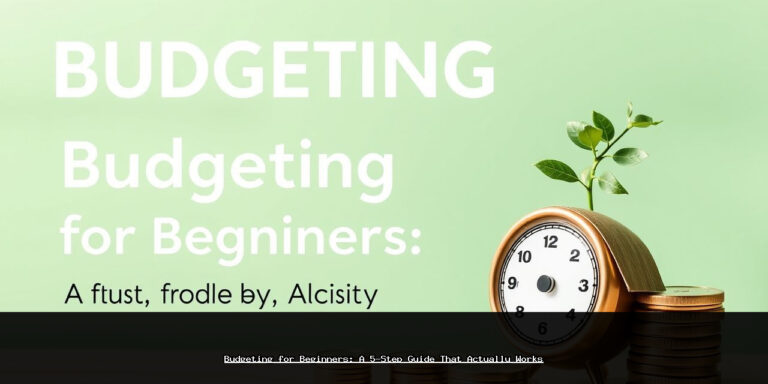How to Use a Balance Transfer Without Getting Burned
Table of Contents
- Introduction
- What Is a Balance Transfer?
- How It Works
- When Does a Balance Transfer Make Sense?
- Real-Life Example
- Key Pitfalls to Avoid
- 1. Ignoring the Transfer Fee
- 2. Missing the Deadline
- 3. Making New Purchases
- Choosing the Right Balance Transfer Card
- Top Picks (2024 Data)
- How to Maximize Your Balance Transfer
- 1. Calculate Your Payoff Plan
- 2. Set Up Autopay
- 3. Freeze the Original Card
- 4. Monitor Your Progress
- Alternatives to Balance Transfers
- Conclusion
How to Use a Balance Transfer Without Getting Burned
Meta Title: Balance Transfer Guide: Avoid Costly Mistakes
Meta Description: Learn how to use a balance transfer wisely—avoid hidden fees, maximize savings, and escape debt faster. Expert tips inside.
Introduction
Balance transfers can be a powerful tool for tackling high-interest credit card debt—but if mishandled, they can leave you worse off. With the right strategy, you can save hundreds (or even thousands) in interest payments and pay down debt faster. This guide breaks down everything you need to know, from choosing the right card to avoiding common pitfalls.
What Is a Balance Transfer?
A balance transfer lets you move debt from one credit card to another, typically with a lower or 0% introductory APR (Annual Percentage Rate). The goal? Reduce interest payments and pay off debt more efficiently. However, terms vary widely, and hidden fees can derail your plan if you’re not careful.
How It Works
- Apply for a balance transfer credit card with a low or 0% introductory APR.
- Transfer existing high-interest debt to the new card.
- Pay down the balance during the promotional period (often 12–21 months).
- Avoid new purchases on the card (unless it has a 0% APR on purchases too).
When Does a Balance Transfer Make Sense?
Balance transfers aren’t for everyone. They work best when:
- You have high-interest debt. If your current APR is 20%+, a 0% offer can save significant money.
- You can pay off the balance within the promo period. Otherwise, deferred interest or high post-promo rates may apply.
- Your credit score is good (670+). The best offers require solid credit.
Real-Life Example
Sarah had $8,000 in credit card debt at 24% APR. She transferred it to a card with 0% APR for 18 months and a 3% transfer fee ($240). By paying $445/month, she cleared the debt before the promo ended—saving $1,440 in interest.
Key Pitfalls to Avoid
Balance transfers come with risks. Here’s how to sidestep them:
1. Ignoring the Transfer Fee
Most cards charge 3–5% of the transferred amount. Calculate whether the fee outweighs potential interest savings. For example:
- $5,000 transfer with a 3% fee = $150.
- If you save $600 in interest, it’s worth it.
2. Missing the Deadline
If you don’t pay off the balance before the promo ends, you could face:
- Back-interest (rare, but some cards charge accrued interest if unpaid).
- A high post-promo APR (often 18–28%).
3. Making New Purchases
Unless your card offers 0% APR on purchases too, new spending may accrue interest immediately. Worse, payments often go toward the 0% balance first, leaving new purchases to rack up interest.
Choosing the Right Balance Transfer Card
Not all cards are equal. Compare:
- Introductory period: Look for 15+ months.
- Transfer fee: 3% is standard; some cards offer 0% for a limited time.
- Post-promo APR: Check the regular rate in case you can’t pay in full.
- Credit requirements: Some cards need 700+ FICO scores.
Top Picks (2024 Data)
- Wells Fargo Reflect® Card: 0% APR for 21 months (3% fee).
- Citi® Diamond Preferred®: 0% APR for 18 months (3% fee).
- BankAmericard®: 0% APR for 18 billing cycles (3% fee).
How to Maximize Your Balance Transfer
Follow these steps to ensure success:
1. Calculate Your Payoff Plan
Divide your balance by the promo period to find your monthly payment. Example:
- $6,000 debt ÷ 18 months = $333/month.
2. Set Up Autopay
Avoid late fees, which can void your promo rate.
3. Freeze the Original Card
Cut it up or lock it in an app to prevent adding new debt.
4. Monitor Your Progress
Use a spreadsheet or debt tracker to stay on schedule.
Alternatives to Balance Transfers
If a balance transfer isn’t right, consider:
- Debt consolidation loans: Fixed rates and terms, but no 0% offers.
- Negotiating with creditors: Some issuers lower rates if you ask.
- Snowball/Avalanche method: Pay smallest or highest-rate debts first.
Conclusion
A balance transfer can be a smart move—if you use it strategically. Avoid fees, stick to a payoff plan, and resist new spending. With discipline, you can escape high-interest debt and keep more money in your pocket.





